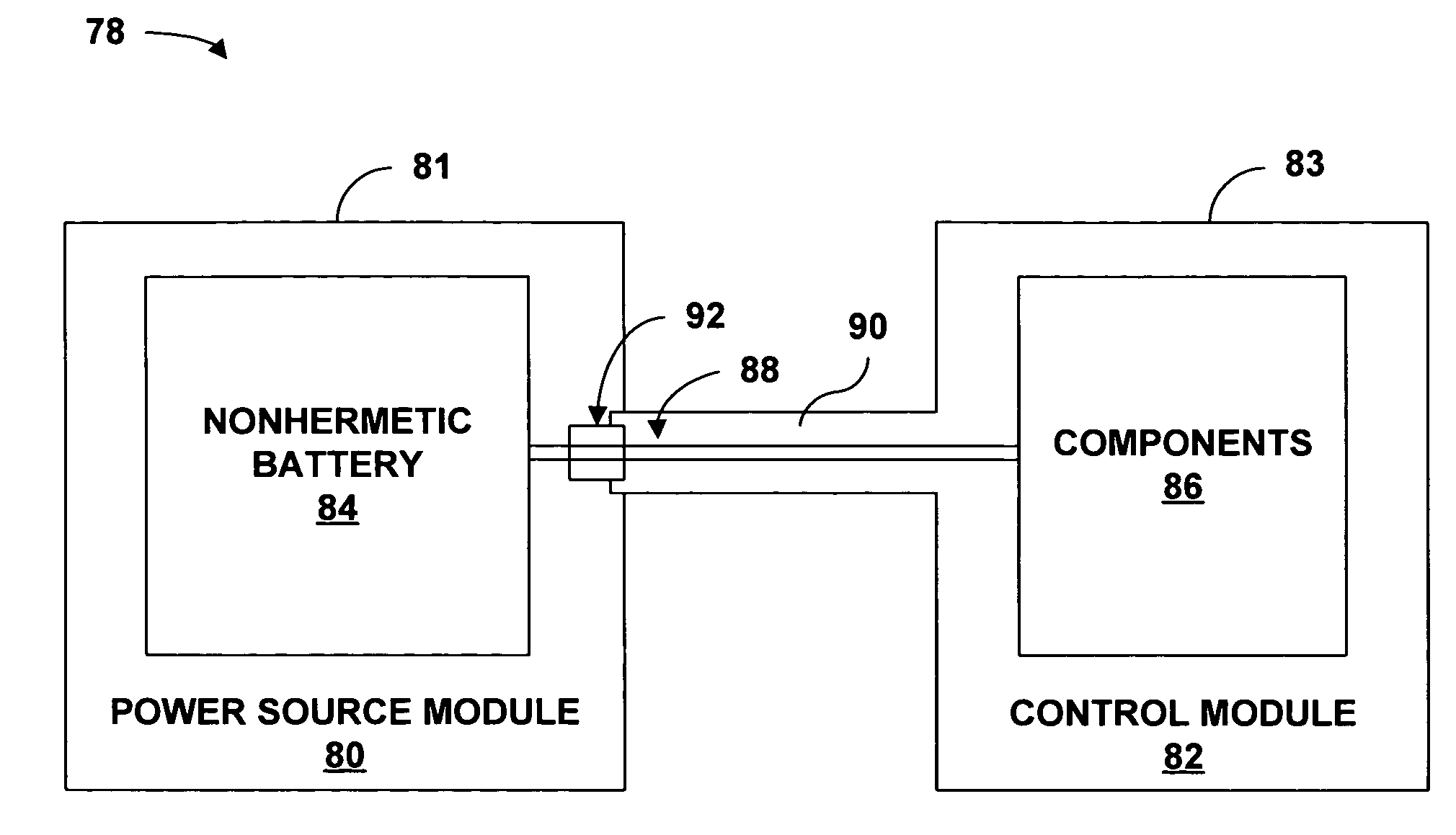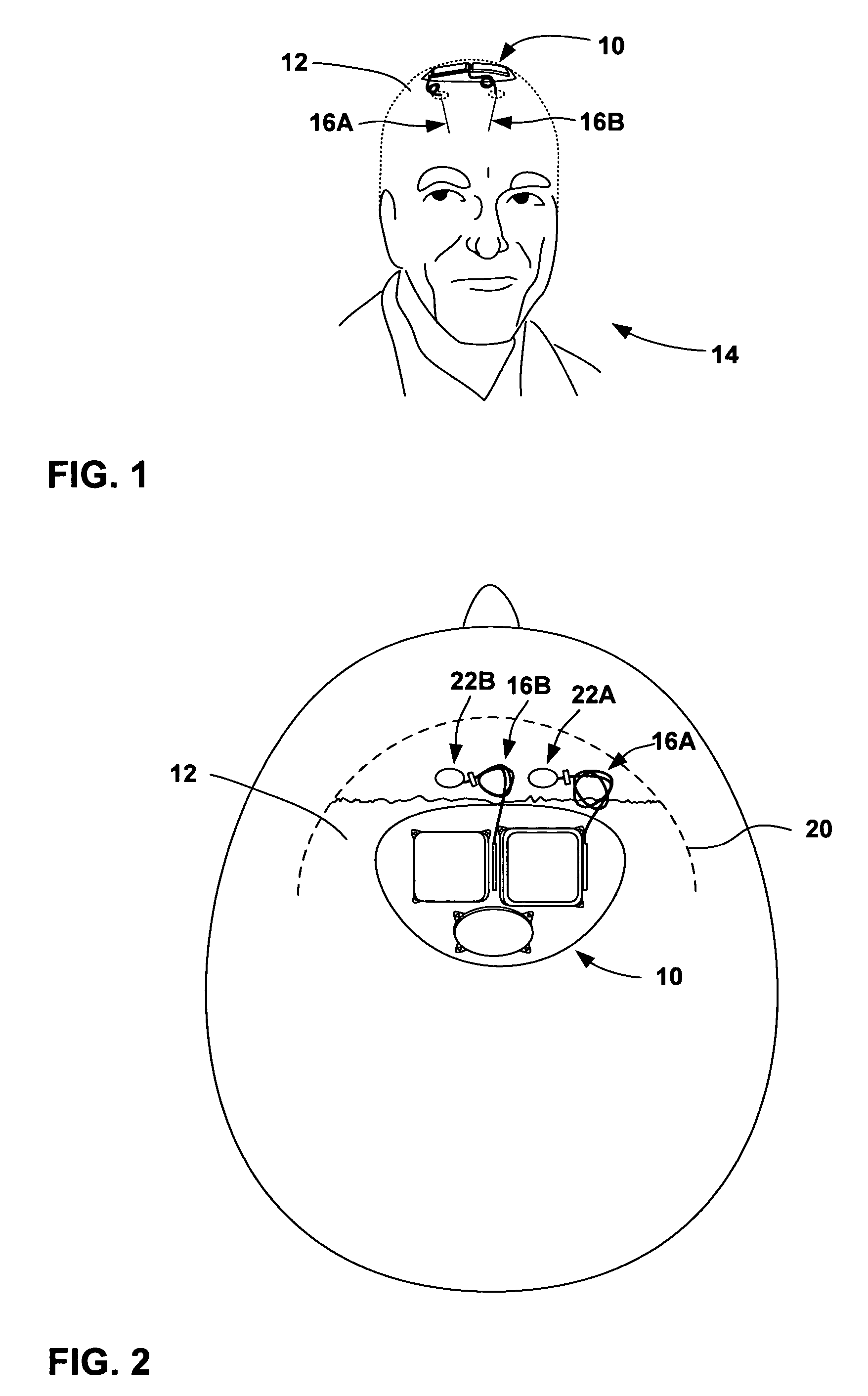Implantable medical device with a nonhermetic battery
a technology of implantable medical devices and non-hermetic batteries, which is applied in the field of medical devices, can solve the problems of non-hermetic batteries that are not used in imds, non-hermetic batteries may leak substances that contain corrosive compounds, damage that would not only be harmful to the imd, and potentially harmful to the patient in whom the imd is implanted, so as to reduce the overall size of the imd, prevent damage to the components, and reduce the thickness of the power sour
- Summary
- Abstract
- Description
- Claims
- Application Information
AI Technical Summary
Benefits of technology
Problems solved by technology
Method used
Image
Examples
Embodiment Construction
[0028]FIG. 1 is a conceptual diagram illustrating an example implantable medical device (IMD) 10 that includes a power source module and a nonhermetic battery housed within a power source module housing. The nonhermetic battery may reduce a thickness and overall size of the power source module housing and thereby reduce a profile of IMD 10. The reduced profile allows IMD 10 to be more cosmetically appealing, comfortable, and clinically acceptable when implanted, for example, on the cranium 12 of a patient 14. Other embodiments of IMD 10 permit the device to be implanted at many other locations within the body of patient 14 that do not present an adequate profile for conventional implantable medical devices.
[0029]The nonhermetic battery may provide advantages beyond the reduced profile of IMD 10. For example, compared to a hermetic battery, the nonhermetic battery expands the material and form factor choices available for the power source module housing. Increased packaging efficienc...
PUM
 Login to View More
Login to View More Abstract
Description
Claims
Application Information
 Login to View More
Login to View More - R&D
- Intellectual Property
- Life Sciences
- Materials
- Tech Scout
- Unparalleled Data Quality
- Higher Quality Content
- 60% Fewer Hallucinations
Browse by: Latest US Patents, China's latest patents, Technical Efficacy Thesaurus, Application Domain, Technology Topic, Popular Technical Reports.
© 2025 PatSnap. All rights reserved.Legal|Privacy policy|Modern Slavery Act Transparency Statement|Sitemap|About US| Contact US: help@patsnap.com



